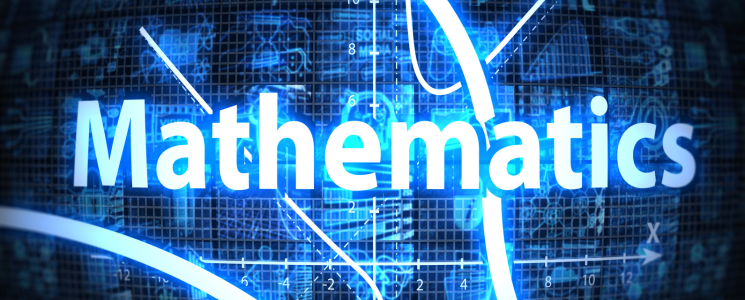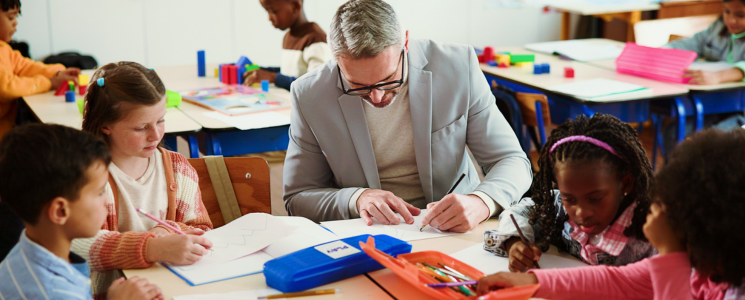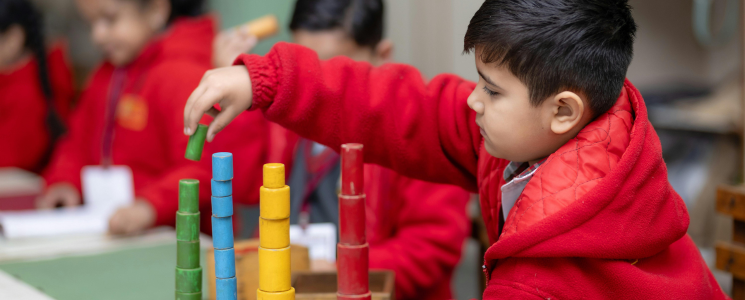Teaching mathematics at the primary level is about more than numbers. It is about helping students see how math connects to their world. The Year 4 Maths Australian Curriculum places special focus on Measurement and Geometry, two strands that bridge practical understanding with abstract reasoning.
For teachers and parents alike, understanding what students should learn in these areas can make a big difference. This guide breaks down what Measurement and Geometry cover, how to teach them effectively, and why they are vital to every child’s mathematical journey.
Understanding the Year 4 Maths Australian Curriculum
Before diving into specific strands, it’s important to understand how the Year 4 Maths Australian Curriculum is structured. The curriculum provides a clear framework of content descriptions, achievement standards, and elaborations.
At its heart, the curriculum aims to build mathematical understanding, fluency, problem-solving, and reasoning. For Year 4 students, this involves moving from simple number facts to applying math in everyday contexts.
Within this framework, Measurement and Geometry play a key role in helping students link math to real-life situations. Whether it is reading the time, measuring ingredients, or recognizing shapes in architecture, these concepts allow children to visualize and apply math meaningfully.
Exploring Measurement in the Year 4 Maths Australian Curriculum
Measurement is a strand that focuses on understanding and using units to describe the world around us. In the Year 4 Maths Australian Curriculum, students explore several key areas such as length, mass, capacity, time, and temperature.
1. Understanding Units of Measurement
At this stage, students move beyond informal measuring to using standard units. They learn to use rulers, scales, and measuring jugs accurately. Teachers can make lessons engaging by connecting measurement to hands-on tasks such as comparing classroom objects or planning a simple garden layout.
For example, a Year 4 student might measure the perimeter of their desk in centimeters or estimate the mass of a fruit. These activities help reinforce both estimation and precision—two core mathematical skills.
2. Developing Skills in Time and Calendars
By Year 4, students are expected to read time to the nearest minute and use both digital and analog clocks confidently. They also learn about calendars, dates, and durations.
Teachers can make learning time more interactive by organizing class schedules or creating weekly planners. Games like “Time Bingo” or digital apps for clock reading can make practice enjoyable while supporting key skills required in the Year 4 Maths Australian Curriculum.
3. Applying Measurement in Real-World Contexts
One of the best ways to reinforce measurement concepts is through real-life applications. For instance, students can measure ingredients for a recipe, track temperature changes in science lessons, or calculate distances in geography activities.
The goal is to help students see measurement as something practical, not just theoretical. This connection strengthens their overall numeracy and makes learning more meaningful.
Geometry in the Year 4 Maths Australian Curriculum
Geometry introduces students to the beauty and structure of the world around them. In the Year 4 Maths Australian Curriculum, geometry focuses on understanding shapes, symmetry, angles, and spatial reasoning.
1. Recognizing and Classifying Shapes
Students in Year 4 learn to describe and classify two-dimensional and three-dimensional shapes based on their properties. They begin to use more precise language such as edges, vertices, and faces.
A classroom activity could involve exploring 3D objects like boxes, cones, and cylinders, or sorting shapes based on their number of sides and angles. Visual aids and hands-on models make these lessons both engaging and memorable.
2. Exploring Symmetry and Transformation
Symmetry becomes an exciting topic in Year 4 geometry. Students identify lines of symmetry in shapes and patterns. They also explore transformations such as flips, slides, and turns.
This is a great opportunity for teachers to blend creativity with learning. Art-based projects, such as creating symmetrical butterflies or geometric patterns, not only reinforce geometry skills but also nurture visual thinking.
3. Building Spatial Awareness
Spatial reasoning is about understanding the relationship between objects in space. Activities such as map reading, drawing grids, or planning classroom layouts help students develop these important visualization skills.
Spatial awareness is not just about shapes; it supports critical thinking in fields like design, engineering, and architecture later in life. By nurturing these skills early, teachers are helping students build a strong mathematical foundation.
Linking Measurement and Geometry Together
Measurement and geometry often overlap, and the Year 4 Maths Australian Curriculum encourages integrating these two strands. For instance, when students calculate the area or perimeter of shapes, they are applying both geometric understanding and measurement skills.
Teachers can design cross-strand projects such as:
-
Designing a classroom blueprint: Students measure classroom dimensions, draw them to scale, and label shapes.
-
Creating art with geometry: Use symmetrical patterns to teach measurement of length and angles.
-
Outdoor measurement challenges: Have students measure the perimeter of the school playground or compare object sizes.
Such integrated lessons make math more dynamic and relevant. They allow students to understand that math is not isolated but deeply connected to the physical world.
Teaching Strategies for the Year 4 Maths Australian Curriculum
The effectiveness of teaching depends on how concepts are delivered. Here are some proven strategies to make Measurement and Geometry engaging for Year 4 learners.
1. Use Visual and Hands-On Learning
Children at this age learn best through doing. Use manipulatives like rulers, measuring tapes, clocks, and geometric shapes. Encourage students to draw, build, and measure as part of each lesson.
Visual learning tools such as diagrams, videos, and digital simulations help make abstract concepts more concrete.
2. Connect Math to Everyday Life
Students are more motivated when they understand why they are learning something. Encourage them to apply measurement and geometry in real-world tasks like cooking, building models, or organizing objects.
When students realize that math exists in sports, art, nature, and technology, they begin to view it as a valuable life skill rather than a school subject.
3. Encourage Inquiry and Exploration
Inquiry-based learning allows students to discover answers through guided exploration. Instead of giving direct answers, teachers can pose questions such as, “What would happen if we double the sides of this rectangle?” or “How can we find the area of our classroom floor?”
This approach helps develop problem-solving and reasoning skills, which are core goals of the Year 4 Maths Australian Curriculum.
4. Incorporate Technology
Digital learning platforms and interactive tools can enhance engagement. Apps like GeoGebra, Mathletics, or simple online protractors allow students to visualize geometric transformations or practice measurement concepts.
Technology also provides immediate feedback, which is essential for building confidence and mastery.
5. Promote Collaborative Learning
Group activities encourage teamwork and communication. Students can work in pairs to measure classroom objects or build geometric models together.
Collaboration not only improves understanding but also mirrors real-life situations where problem-solving often happens in teams.
Assessing Learning in Year 4 Maths
Assessment is essential to track progress and guide future lessons. In the Year 4 Maths Australian Curriculum, assessment should measure both understanding and application.
Types of Assessment
-
Formative assessments: Quick activities like exit tickets, quizzes, or verbal questioning to check ongoing understanding.
-
Summative assessments: Projects, tests, or assignments at the end of a unit to evaluate comprehension.
-
Practical tasks: Measuring real objects, drawing shapes, or presenting geometric designs to demonstrate skills.
The goal is to assess not just whether students know something, but whether they can apply that knowledge in practical contexts.
Using Feedback for Growth
Timely feedback helps students understand their strengths and areas for improvement. Encouraging self-assessment can also help students take ownership of their learning journey.
Building Confidence and Enjoyment in Year 4 Maths
Math anxiety can begin early if students see the subject as difficult or dull. Teachers can prevent this by building a positive learning environment. Celebrate effort, encourage curiosity, and make lessons interactive.
Incorporating games, puzzles, and storytelling makes math enjoyable. For example, using geometry to design a treasure map or measuring materials for a craft project can turn lessons into adventures. When students associate learning with enjoyment, confidence grows naturally.
The Year 4 Maths Australian Curriculum provides a strong foundation for mathematical understanding through Measurement and Geometry. These strands go beyond memorizing facts; they help students make sense of the world through numbers, shapes, and patterns. By blending structure with creativity, teachers can deliver lessons that are both educational and exciting. Aligning classroom activities with the curriculum ensures that every student develops the skills, confidence, and curiosity needed for lifelong learning.
With thoughtful planning, interactive strategies, and a focus on real-world application, measurement and geometry lessons become more than just topics, they become experiences that shape how students see and understand their world.







